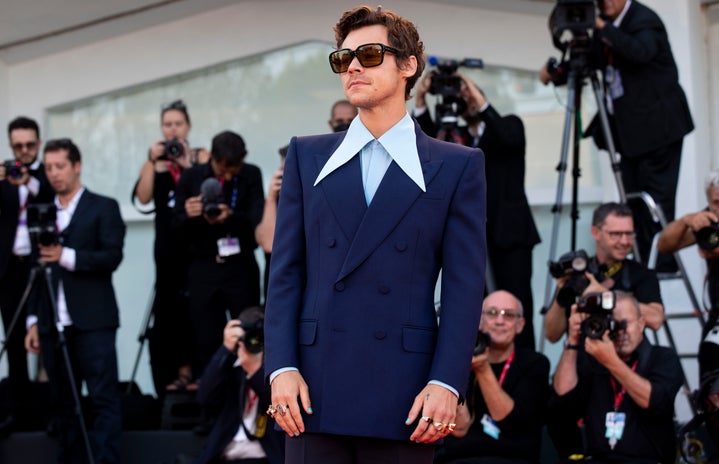In an age where toxic masculinity continues to plague the media, kids and young adults alike need a safe space to turn to. That safe space opened itself to us with musical artists like Conan Gray and Harry Styles: male artists who openly discuss gender discrimination, toxic masculinity, LGBTQ+ topics, and even the importance of embracing your emotions. Now, that is not to say that artists like this did not exist in the past. We all know Elton John, David Bowie, Freddie Mercury, and so on. Although many of us turn to them for inspiration as well, most of us were not alive during their prime. What we are witnesses to are the current artists who are carrying on their legacy and re-normalizing what many like to call “positive masculinity.”
So what exactly is positive masculinity? Positive masculinity is an idea that encourages men to express their emotions and embrace their masculinity in a safe and healthy way. With the rising popularity of internet personalities like Andrew Tate, a former kickboxer turned social media influencer who detailed the sickening way he would attack a woman who cheated on him (among many other comments endorsing the mistreatment of women), misogyny has taken over so many corners of the internet. Given how prevalent social media is in almost all of our lives, it is terrifying to see an influx of young men and boys defending his comments.
That is one of the many reasons why we look to male artists who have integrated healthy messages into their shows, songs, and interviews. People want to believe that there are still positive male role models out there for men, women, and everyone in between to turn to for guidance. This isn’t limited to only Harry Styles and Conan Gray, but the reason their messages are so powerful is due to their expansive platforms. When they make statements about the importance of accepting your sexuality, it reaches millions of people around the world. In Conan Gray’s song “The Story,” one of his verses tells the story of two boys who fell in love with each other. Another example is when Harry Styles told Bizarre, in response to Miley Cryus coming out as pansexual, that he believes “everyone should just be who they want to be.” This, however, does not mean that other artists with smaller platforms who share similar messages are any less significant. Male role models like this also aren’t limited to musicians. Actors like Chris Evans told The New York Times in response to the #MeToo movement in 2018 that “the hardest thing to reconcile is that just because you have good intentions, doesn’t mean it’s your time to have a voice,” or comedians like Andy Samberg who, in an interview with Glamour in 2013, criticized men who write off comedians simply because they’re women, make an equally strong impact.
All in all, I think it is important for audiences, specifically child, teen, and young adult audiences, to be able to look up to male artists who drown out the misogynistic noise of other influencers. With the normalization of men embracing their emotions, their feminine and masculine sides, their sexuality, their gender identity and their creativity, many celebrities are building platforms that can help spread their message. As a college student experiencing the rise of these celebrities, I can say with full confidence they have helped me and so many others stay hopeful for the behavior of our male peers. Yes, there will always be Andrew Tate fans and men who claim that the concept of positive masculinity is pointless, but the positive impact male artists like Conan Gray and Harry Styles have made is far too sizable to ignore. I hope with the emergence of additional celebrities like them, more and more people will start listening to these artists for their music, but ultimately stick around for their message.


